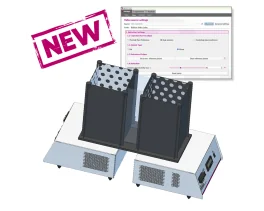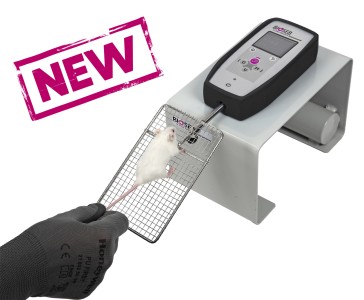Authors
C. A. Vadniea, D. J. Hintona, S. Choib, Y. Choib, C. L. Ruby
Lab
Mayo Clinic College of Medicine, Rochester, USA
Journal
Neuropharmacology
Abstract
Intracerebroventricular administration of neurotensin (NT) suppresses locomotor activity. However, the brain regions that mediate the locomotor depressant effect of NT and receptor subtype-specific mechanisms involved are unclear. Using a brain-penetrating, selective NT receptor type 1 (NTS1) agonist PD149163, we investigated the effect of systemic and brain region-specific NTS1 activation on locomotor activity. Systemic administration of PD149163 attenuated the locomotor activity of C57BL/6J mice both in a novel environment and in their homecage. However, mice developed tolerance to the hypolocomotor effect of PD149163 (0.1 mg/kg, i.p.). Since NTS1 is known to modulate dopaminergic signaling, we examined whether PD149163 blocks dopamine receptor-mediated hyperactivity. Pretreatment with PD149163 (0.1 or 0.05 mg/kg, i.p.) inhibited D2R agonist bromocriptine (8 mg/kg, i.p.)-mediated hyperactivity. D1R agonist SKF-81297 (8 mg/kg, i.p.)-induced hyperlocomotion was only inhibited by 0.1 mg/kg of PD149163. Since the nucleus accumbens (NAc) and medial prefrontal cortex (mPFC) have been implicated in the behavioral effects of NT, we examined whether microinjection of PD149163 into these regions reduces locomotion. Microinjection of PD149163 (2 pmol) into the NAc, but not the mPFC suppressed locomotor activity. In summary, our results indicate that systemic and intra-NAc activation of NTS1 is sufficient to reduce locomotion and NTS1 activation inhibits D2R-mediated hyperactivity. Our study will be helpful to identify pharmacological factors and a possible therapeutic window for NTS1-targeted therapies for movement disorders.
BIOSEB Instruments Used
Grip strength test (BIO-GS3)
Source :
http://www.sciencedirect.com/science/article/pii/S0028390814002226

 Pain - Thermal Allodynia / Hyperalgesia
Pain - Thermal Allodynia / Hyperalgesia Pain - Spontaneous Pain - Postural Deficit
Pain - Spontaneous Pain - Postural Deficit Pain - Mechanical Allodynia / Hyperalgesia
Pain - Mechanical Allodynia / Hyperalgesia Learning/Memory - Attention - Addiction
Learning/Memory - Attention - Addiction Physiology & Respiratory Research
Physiology & Respiratory Research











![Dynamic Weight Bearing 2.0 – Postural Module [Add-on]](https://bioseb.com/733-home_default/dynamic-weight-bearing-20-add-on-postural-module.jpg)
























 Pain
Pain Central Nervous System (CNS)
Central Nervous System (CNS) Neurodegeneration
Neurodegeneration Sensory system
Sensory system Motor control
Motor control Mood Disorders
Mood Disorders Other disorders
Other disorders Muscular system
Muscular system Joints
Joints Metabolism
Metabolism Cross-disciplinary subjects
Cross-disciplinary subjects CONFERENCES & MEETINGS
CONFERENCES & MEETINGS 